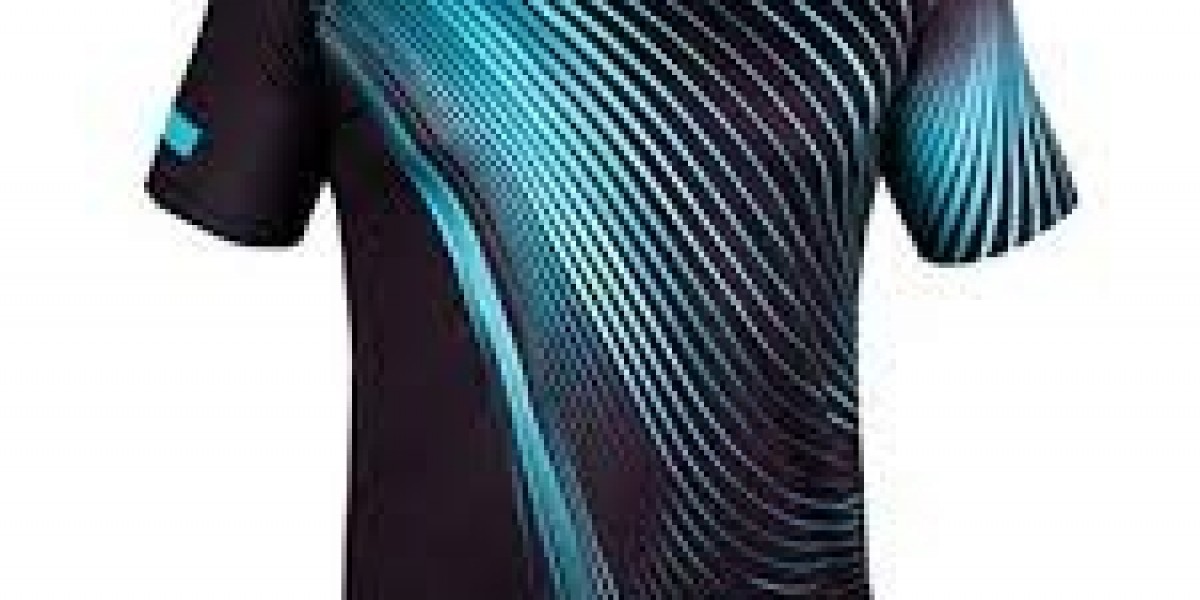Sports shirt printing plays a pivotal role in team sports, branding, and fan merchandise. Whether it's for a local soccer team, a corporate sports event, sports shirt printing athletic wear, printed sports shirts help in unifying teams, promoting brands, and expressing individual styles. This comprehensive guide explores the various aspects of sports shirt printing, including techniques, materials, design considerations, and environmental impacts.
Understanding Sports Shirt Printing
History of Sports Shirt Printing
The tradition of customizing sports apparel dates back to the early 20th century when teams began adding numbers and names to uniforms for identification. Over the decades, advances in printing technology have transformed simple numbering into complex designs featuring logos, sponsors, and personalized graphics.
Importance in Team Sports and Branding
Customized sports shirts foster team spirit and cohesion. They also serve as a powerful branding tool, allowing teams and sponsors to increase visibility and connect with fans. For businesses, branded sports apparel can enhance corporate identity and promote company values.
Types of Sports Shirt Printing Techniques
Screen Printing
Advantages
- Cost-Effective for Bulk Orders: Ideal for large quantities due to the low cost per unit after initial setup.
- Durable Prints: Produces long-lasting designs that withstand frequent washing.
- Vibrant Colors: Capable of producing bright and opaque colors on various fabrics.
Disadvantages
- Limited Color Range per Design: Each color requires a separate screen, making multicolor designs more complex and expensive.
- Not Ideal for Small Orders: The initial setup cost can be high for small quantities.
Heat Transfer Printing
Advantages
- Versatility: Suitable for complex designs and photographs.
- Quick Setup: Faster turnaround time with minimal setup.
- Customization: Allows for easy personalization of individual shirts.
Disadvantages
- Less Durable: Prints may fade or crack over time, especially with frequent washing.
- Feel of the Print: Can leave a heavier feel on the shirt compared to other methods.
Sublimation Printing
Advantages
- High-Quality Prints: Produces vibrant, full-color designs that become part of the fabric.
- Soft Finish: The print doesn't add any extra layer, maintaining the fabric's breathability.
- Durability: Resistant to fading and cracking.
Disadvantages
- Fabric Limitations: Works best on polyester or polyester-coated materials.
- Color Restrictions: Primarily effective on white or light-colored fabrics.
Direct-to-Garment (DTG) Printing
Advantages
- Detailed Designs: Excellent for intricate graphics and a wide color spectrum.
- No Minimum Orders: Cost-effective for small quantities or one-off prints.
- Soft Feel: Ink is absorbed into the fabric, resulting in a smooth finish.
Disadvantages
- Slower Production: Not ideal for large batches due to longer print times per shirt.
- Color Vibrancy: Colors may be less vivid on dark fabrics without proper pretreatment.
Embroidery
Advantages
- Professional Look: Adds a high-quality, textured appearance.
- Durability: Embroidered designs are long-lasting and resistant to wear.
- Ideal for Logos: Suits corporate branding and team emblems.
Disadvantages
- Cost: More expensive than printing methods, especially for large designs.
- Design Limitations: Not suitable for detailed images or small text.
Materials Used in Sports Shirts
Cotton
- Comfortable: Soft and breathable, ideal for casual wear.
- Absorbent: Wicks moisture but can become heavy when wet.
- Printing Compatibility: Works well with most printing techniques.
Polyester
- Moisture-Wicking: Dries quickly, making it suitable for athletic activities.
- Durable: Resistant to stretching and shrinking.
- Printing Compatibility: Ideal for sublimation printing.
Blended Fabrics
- Best of Both Worlds: Combines the comfort of cotton with the durability of polyester.
- Versatile: Suitable for various printing methods.
- Comfort: Enhanced fit and feel for athletic wear.
Designing Sports Shirts
Selecting Colors
- Team Colors: Reflect team identity and branding.
- Contrast: Ensure the print color contrasts well with the shirt color for visibility.
- Color Psychology: Use colors that evoke the desired emotions and responses.
Choosing Fonts and Graphics
- Readability: Select clear fonts for names and numbers.
- Brand Alignment: Fonts and graphics should align with team or company branding.
- Licensing: Use legally obtained fonts and images to avoid infringement issues.
Placement of Logos and Numbers
- Standard Positions: Front chest, back, and sleeves are common areas.
- Balance: Distribute elements evenly for aesthetic appeal.
- Compliance: Adhere to league or organizational guidelines for size and placement.
The Printing Process Step-by-Step
Design Creation
- Concept Development: Start with sketches or digital mock-ups.
- Software Tools: Use graphic design software like Adobe Illustrator or CorelDRAW.
- Proofing: Create proofs for approval before printing.
Preparing the Shirt
- Fabric Selection: Choose the appropriate material based on the printing method.
- Pre-Treatment: Some methods require pre-treating the fabric for better ink adhesion.
- Alignment: Ensure the shirt is correctly positioned for accurate printing.
Printing the Design
- Method Application: Apply the chosen printing technique carefully.
- Quality Settings: Adjust machine settings for optimal print quality.
- Drying/Curing: Use heat press or dryers to set the ink or transfers.
Quality Control
- Inspection: Check for errors, misalignments, or color issues.
- Testing Durability: Perform stretch and wash tests if necessary.
- Final Approval: Ensure the finished product meets all specifications.
Caring for Printed Sports Shirts
Washing Instructions
- Cold Wash: Use cold water to preserve colors and prevent shrinkage.
- Inside Out: Turn shirts inside out to protect the print.
- Mild Detergents: Avoid harsh chemicals that can degrade the print.
Storing Tips
- Avoid Sunlight: Prolonged exposure can fade colors.
- Fold Properly: Prevent creases that can damage the print.
- Drying: Air dry when possible; avoid high heat from dryers.
Environmental Considerations
Sustainable Materials
- Organic Cotton: Reduces pesticide use and is biodegradable.
- Recycled Polyester: Utilizes plastic waste, reducing landfill impact.
- Bamboo Fabrics: Renewable and eco-friendly alternative.
Eco-Friendly Printing Techniques
- Water-Based Inks: Less toxic and more environmentally friendly.
- Digital Printing: Minimizes waste compared to screen printing.
- Energy Efficiency: Use equipment with low energy consumption.
Conclusion
Sports shirt printing is a multifaceted industry that combines art, technology, and functionality. By understanding the various printing techniques, materials, and design principles, teams and organizations can create high-quality apparel that not only looks great but also performs well. Considering environmental impacts and proper care can further enhance the longevity and sustainability of printed sports shirts. Whether for professional teams, amateur leagues, or promotional events, the right approach to sports shirt printing can make a significant difference in appearance, performance, and brand representation.



